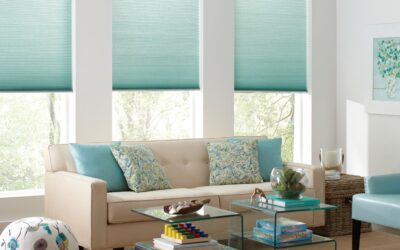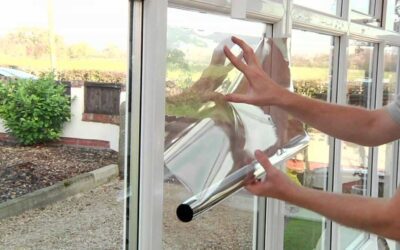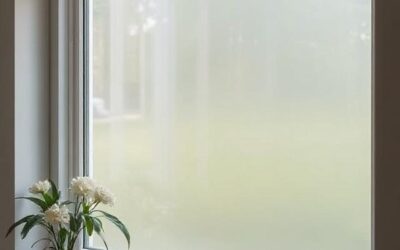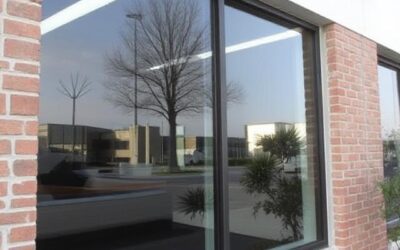How Window Tint Can Enhance Your Interior Design
Window tint can play a pivotal role in transforming and elevating your living space into a dream home. From improving aesthetics to enhancing functionality, the right window tint can elevate your interior design to new heights. While many designers may overlook it, a reputable interior design company will understand the power of window tint.
This guide delves into the world of window tint, exploring its various aspects and explaining how it can enhance your interior design.
Understanding Window Tinting
Window tint is a thin, transparent film applied to the interior surface of windows. It is designed to reduce the amount of visible light, heat, and harmful UV rays that penetrate through the glass into the interior of the residential or commercial building.
Types of Window Tint Films
There are several types of window tint films available in the market and each type comes with its own unique characteristics. While selecting the right tint for your interior design, your interior design or window tinting partner may provide the following options to consider:
1. Dyed Window Tint
This type of tint is known for its color-enhancing properties. By choosing this tint, you can add a subtle hue to your windows, complementing your interior color scheme.
2. Metalized Window Tint
Metalized films contain tiny metallic particles that reflect heat and UV rays. They are highly effective at reducing solar heat gain, making them an excellent choice for energy-efficient interiors.
3. Ceramic Window Tint
Ceramic tint is a premium option known for its clarity and heat-blocking capabilities. It allows for maximum visible light transmission. If you want to minimize heat and UV rays, then ceramic tint would be the best option.
How to Choose the Right Window Tint for Your Interior Design Style
Choosing the right window tint is crucial in order to ensure that it seamlessly integrates with the style of your preference.
Here are some key considerations that can help you and your residential interior designing firm find the right window tint:
1. Matching Tint Colors and Patterns
When choosing a window tint, color, and patterns are mostly the first and most important factors. Consider how the tint will complement your existing décor. If you want to go for a contemporary look, opt for neutral or cool-toned tints. And if you prefer a more traditional aesthetic, ask your interior design company to choose warmer tones.
2. Assessing Light Levels and Privacy Needs
The second factor is to consider the level of natural light in your space and your privacy requirements. For instance, in living rooms or kitchens, you may want to preserve ample natural light. However, for bedrooms or bathrooms, privacy might be a top priority. Remember that window tints come in various opacity levels, which allows you to strike the right balance between light and privacy.
3. Considering Long-Term Maintenance
Another factor to keep in mind is the long-term maintenance of the window tint you decide upon. The reason is that some tints may require more care than others. Ceramic tints, for instance, are highly durable and easy to maintain, making them a suitable choice for those looking for low-maintenance solutions.
Installation and Placement Tips
When it comes to installing window tint, you have two options: professional installation or a DIY approach.
1. Professional vs. DIY Installation
While DIY kits can be a cost-effective solution for some, professional installation offers several advantages. The interior design or tinting company you choose to work with will have experts to ensure precise application and can help you avoid common pitfalls like bubbles or wrinkles in the tint.
2. Ideal Window Locations for Tinting
It’s a fact that not all windows require tinting, so it’s essential to identify the ideal locations for this enhancement. Consider tinting windows that receive direct sunlight, such as south-facing or large windows. This is because these are prime candidates for heat and UV reduction.
Benefits of Combining Interior Design and Window Tinting
Now that we’ve explored the basics of window tinting let’s explore how it can enhance your interior design:

1. Enhanced Aesthetic Appeal
Window tint can act as a subtle yet impactful design element. It adds depth and dimension to your space by introducing varying levels of opacity and color. Talk to your designer and choose it thoughtfully. An experienced company will ensure that the window tint complements your interior decor, elevating the overall aesthetics of your home.
2. Improved Energy Efficiency
Efficiency is the key to an exceptional residential interior design, and window tint plays a significant role in this aspect. By reducing solar heat gain, window tint helps regulate indoor temperatures. This means that your home stays cooler in the summer and warmer in the winter. This will also reduce the need for excessive heating or cooling, thereby saving energy and reducing utility costs.
3. Increased Privacy and Security
Privacy is one of the fundamental aspects of a living space and window tint offers an added layer of privacy without compromising natural light. It prevents prying eyes from peering into your home while allowing you to enjoy scenic outdoor views. Additionally, it enhances security by making it more challenging for potential intruders to see inside.
4. UV Protection for Furniture and Decor
Usually, the Interior design and decor involves valuable furniture, artwork, and decor items. These items are often susceptible to damage from UV rays. By getting window tint, you can provide reliable UV protection, preserving the vibrancy of your furnishings and artwork for years to come.
Conclusion
In conclusion, window tinting is a versatile and often overlooked tool in the world of interior design. By carefully selecting the right tint and considering placement, you can transform your living space into the dream home you’ve always envisioned. Getting tinted windows can enhance aesthetics, improve energy efficiency, provide privacy, and safeguard your interior investments from harmful UV rays.
So, if you’re ready to revamp your home and create a harmonious blend of style and functionality, consult a professional tinting or interior design company. As professionals, they can guide you through the process of selecting and installing the perfect window tint to complement your unique vision and transform your living space into a sanctuary of comfort and beauty.
So don’t miss out on the opportunity to maximize your internal design potential with columbine window tint.










